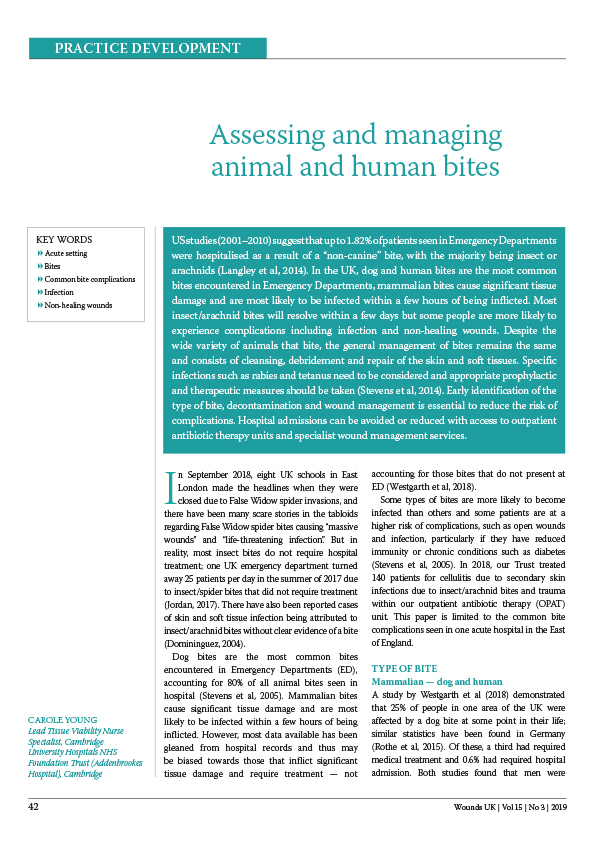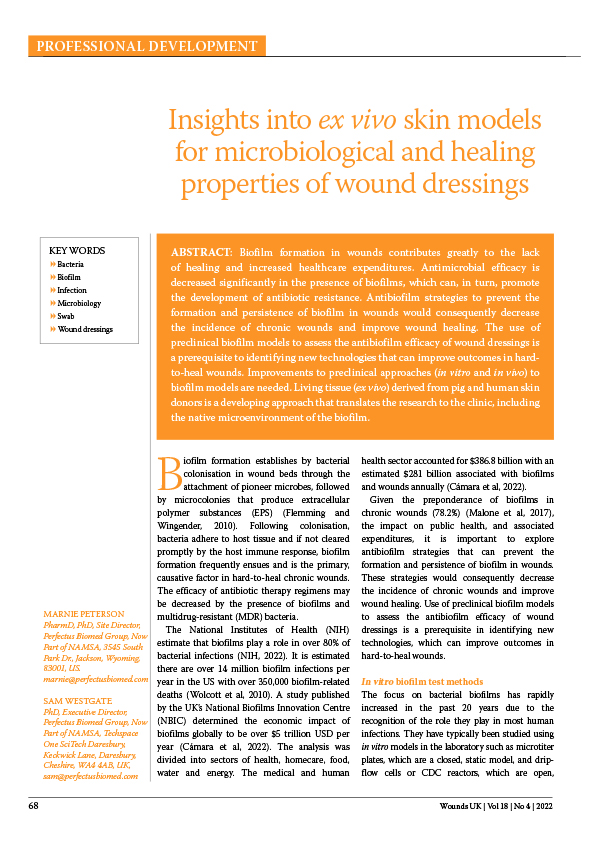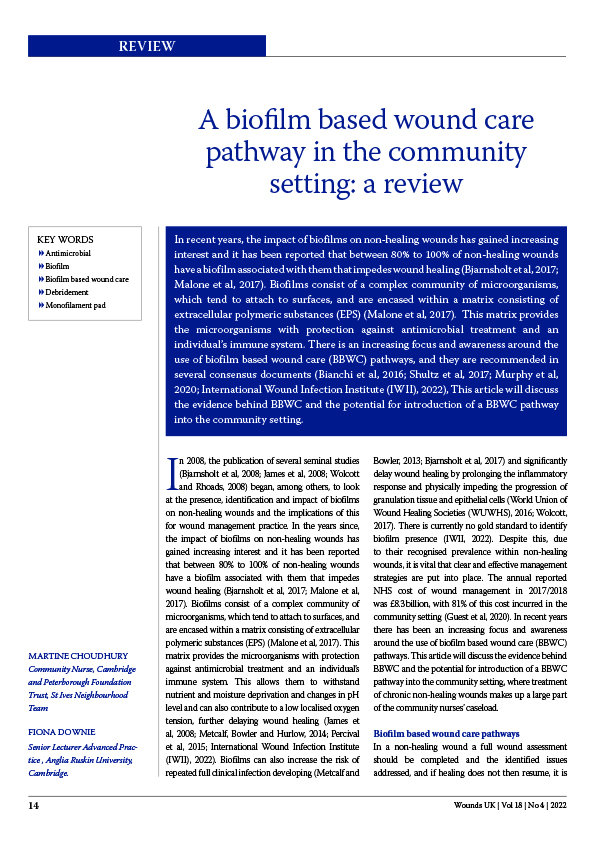US studies (2001–2010) suggest that up to 1.82% of patients seen in Emergency Departments were hospitalised as a result of a “non-canine” bite, with the majority being insect or arachnids (Langley et al, 2014). In the UK, dog and human bites are the most common bites encountered in Emergency Departments, mammalian bites cause significant tissue damage and are most likely to be infected within a few hours of being inflicted. Most insect/arachnid bites will resolve within a few days but some people are more likely to experience complications including infection and non-healing wounds. Despite the wide variety of animals that bite, the general management of bites remains the same and consists of cleansing, debridement and repair of the skin and soft tissues. Specific infections such as rabies and tetanus need to be considered and appropriate prophylactic and therapeutic measures should be taken (Stevens et al, 2014). Early identification of the type of bite, decontamination and wound management is essential to reduce the risk of complications. Hospital admissions can be avoided or reduced with access to outpatient antibiotic therapy units and specialist wound management services.







